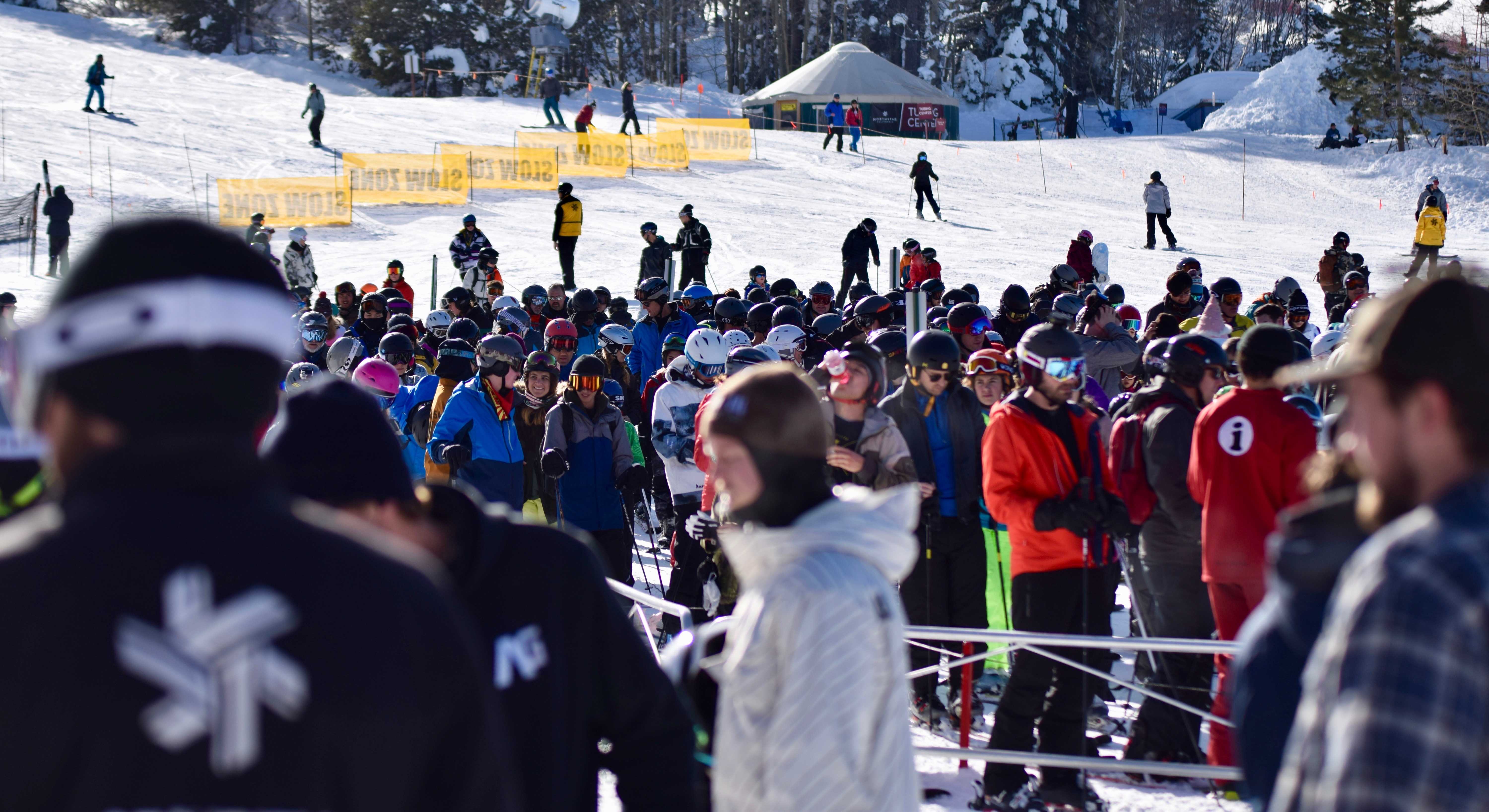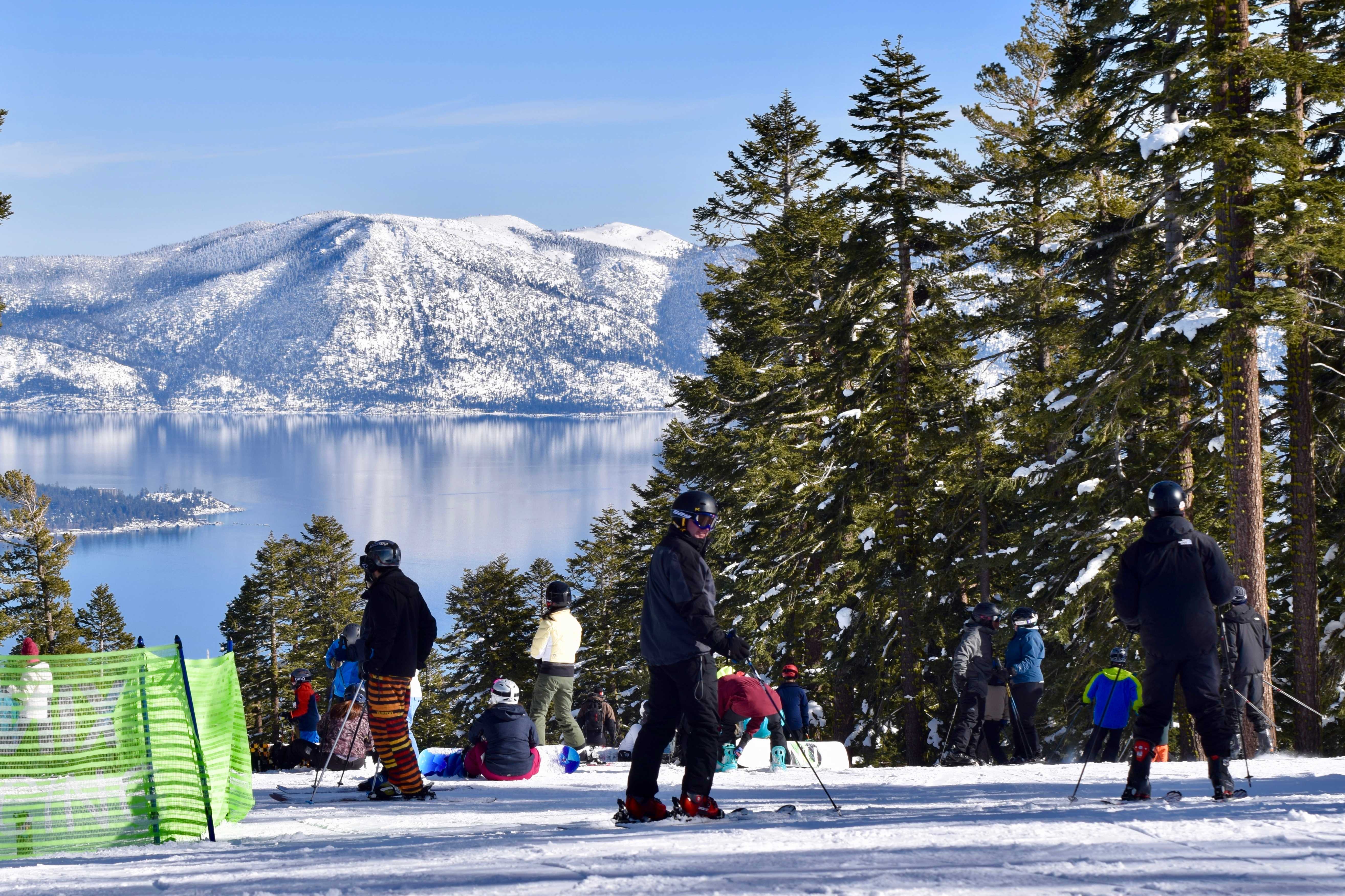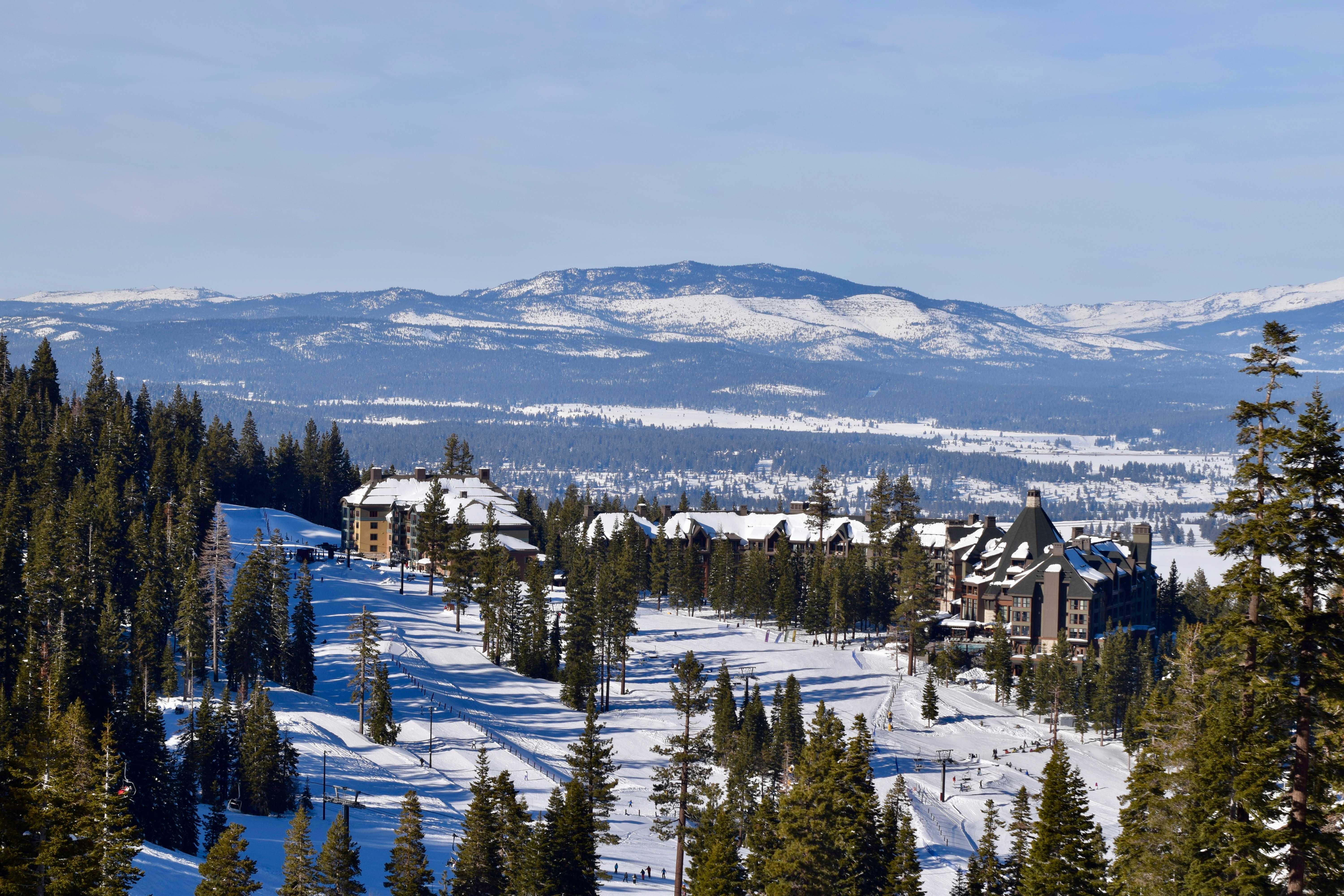Northstar’s head snowboarding coach Lee Guarino waited patiently at the entrance to the terrain park as his riders from the teen snowboarding team pushed off into the jungle of metal rails below. He followed closely behind, and the team snaked through the run in minutes. Guarino wasn’t worrying about any uncertainty; his team had been practicing for months this season and were on the fourth straight day of team practice. He passed his flying team and paused at the exit to the park, on a ridge which overlooks the halfway point between the summit and base of the so-called “Mt. Pluto.” To his right, was the line to the chair lift that would lead to another run. But when his group passed by him, he turned left.
An open patch of tracked out snow ran perpendicular to the mountain, and hundreds of people were crammed between an expensive mid-mountain restaurant and a packed chairlift. It’s the holiday break. The Bay Area, Central Valley and Nevada crowds have crashed into his mountain and have planted their roots for the next 10 days.
“People’s whole experience goes down,” Guarino said. “It’s like skiing or snowboarding in traffic.”

But according to Guarino, that kind of traffic is normal every holiday break. Lake Tahoe has changed from riding haven to premium vacation destination, and the dynamic between the Bay Area and its snowy backyard is beginning to shift according to locals and frequent Bay Area vacationers.
Over the past 10 years, the Lake Tahoe area has been transforming from small mom-and-pop ski resorts like the local Donner Ski Ranch to commercialized multi-million dollar businesses like Kirkwood Mt. According to Vail Resorts, Heavenly Ski Resort was the first Tahoe resort bought by this Colorado based resort conglomerate in 2002, and by 2014 they made their final purchase in the Sierra Nevada mountain range. Now Northstar California, Kirkwood Mountain and Heavenly Ski Resort are part of an international chain of resorts under the Vail Resorts moniker, with the primary focus of providing a family friendly riding experience. Sometimes, this means shutting down more difficult runs because of a lack of snow and concentrating the remaining powder into more family friendly runs.
Guarino lives nearby in Truckee, Calif., and as a local he’s seen this change affect friends and coworkers over the past 10 years. According to Guarino, a culture that encouraged visitors to try out skiing and snowboarding through cheap passes and a thriving winter sports industry has now has seen a corporate bottom line creating difficult to sustain lives.
“A lot of the people who work for me or the people that I have worked with here, sometimes struggle to find a place to live,” Guarino said. “I imagine it’s somewhat the same in the Bay Area too, where it’s just ‘Yeah I just moved here … and I can’t find a place to live!’”

According to the San Francisco Chronicle, prices at seven out of 14 Tahoe resorts are over $100 for a day trip. For casual Bay Area vacationers like junior Megumi Pennebaker, that’s not the price of a family trip. Over winter break, her family journeyed to her grandpa’s handmade cabin to snowboard at Homewood resort where the prices were around $50 per day. Before recent price hikes, driving to Lake Tahoe was much cheaper than taking a plane or bus cross-country.
“We got a family pack for the season pass, so we go up a lot because of that,” Pennebaker said. “We can go [to Tahoe] quickly and for a little bit, and it’s nice to just relax.”
With the raises in prices, Tahoe loses that appeal to newcomers to the area. However, some have built duel lives in Tahoe and the Bay Area before these price hikes, like Pennebaker’s family, choose to keep going to Tahoe as a cherished family tradition.
“I think how it’s just a nice family experience — we like that better,” Pennebaker said. “We’re not that competitive.”
The experience is a vacation without hassle. Tahoe vacations have remained inexpensive and convenient for three years because of her family’s local connection. This familiar experience is slowly fading for a new skier like senior Joshua Tai hoping to visit this California staple.
“They have this little ski school part, like right in the front,” senior Joshua Tai said, “And that was just crowded. Even buying tickets there was pretty crowded.”

Tai hardly ever goes up to Tahoe, and he decided to go on a spur of the moment trip over winter break. According to the Diamond Peak Online Lift Ticket webpage, $64 youth day tickets at the local ski resort were waiting to greet him. Although riding with his friends was a good experience for him, the prices themselves still sting.
“Honestly, it’s really overpriced,” Tai said. “There’s no reason that skiing on their snow would take 100 dollars.”
As each passing year melts away, the days of locally owned resorts prioritizing a larger and more diverse skiable areas fade deeper into the history of Lake Tahoe. Now, it seems as though Tahoe is on the next step of its evolution as a winter resort destination. But Kirkwood Mountain team rider and junior Jasper Edbrooke won’t forget the days when his home mountain used to be packed with jumps — not people.
“It’s beautiful up there in the mountains and the lake,” Edbrooke said. “For someone like me who is an advanced rider, [Kirkwood has become] a less desirable mountain, but it’s better than no mountain.”
When Edbrooke first went up six years ago, Kirkwood Ski Resort had boasted three massive terrain parks running the length of the mountain. Now, due to fewer riders and skiers visiting the advanced terrain parks and the increasing costs of maintaining said parks taking their toll, Kirkwood only keeps the smallest of the three parks open. For riders and skiers like Pennebaker and Tai, the change doesn’t matter much. But riders like Edbrooke and Guarino are starting to see less and less of an emphasis for advanced riders, or riders who are passionate about the sport, to ride in Tahoe.
It’s been a risky trade-off. Commercially, the Tahoe resorts haven’t been floundering financially since a new clientele, one hoping to have fun high-end mountain adventure, are willing to spend more on higher priced lodging and food. However, according to Guarino and Edbrooke, they’re replacing the customers looking for a snowboarding or skiing experience who become discouraged by the high vacation/experience-like prices.
“At the end of the day, it’d be nice to have big open slopes all to yourself, but the resort wouldn’t be able to operate with just you snowboarding there,” Edbrooke said, “And those lifts cost like 10,000 dollars. It’s people that keep the resort running.”





